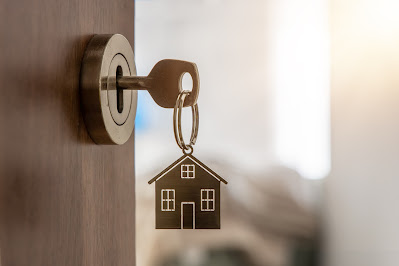Historically, spring and summer have been the busiest times in the real estate market. But the traditional seasonality of homebuying and selling was upended by the pandemic: Home sales slowed significantly amid stay-at-home orders, then dramatically spiked, and the market remained volatile for quite some time.
The good news is, things have since returned to something closer to normal. One positive sign: After years of a distinct lack of available homes for sale, which kept homebuyers at a disadvantage, Realtor.com is forecasting an 11.7 percent increase in existing housing inventory for 2025. This increase would bring more balance to the supply-and-demand metric — and also more leverage for buyers. In other words, seasonality may once again become the most important factor in determining the best time of year to buy a house.
Spring and early summer are the busiest and most competitive time of year for the real estate market. There’s usually more inventory listed for sale than other times of year, and home prices tend to be steeper to reflect the increased demand. Since 2011, the months of February through June have been the most lucrative time to sell, according to a 2024 study by ATTOM Data Solutions, with May in particular earning sellers an average premium of 13.1 percent above market value. The other months in the range all yielded premiums ranging from 12.2 percent to 12.8 percent.
“Typically, sellers choose spring and summer as the time to list as the majority of buyers are out in the market,” says Ryan Jancula, principal and lead broker with Jancula Group at Compass in Los Angeles. “This is a double-edged sword for a buyer, as you will be met with more opportunities but [also] much more competition, which may lead to further increase in prices or less desirable sale terms.”
If you’re hoping to save some money and your timeline is flexible, consider waiting until the rush is over and not starting your home search until mid- or late-summer. The most expensive month of the year to purchase a home is May, when seller premiums are as high as 13.1 percent above market value, according to ATTOM data.
Buying off-season has its benefits, though. The ATTOM study, which analyzed 59 million single-family home and condo sales between 2011 and 2023, showed that October is the month with the lowest seller premium by far at 8.8 percent, compared to May’s 13.1 percent. The next lowest were September and November, both at 9.5 percent. That means October is when homebuyers are likely to get the best deal. In fact, a recent Zillow report declared early fall to be “the next housing sweet spot.” The least expensive month of the year to purchase a home is October, when seller premiums are at their lowest, according to ATTOM.
Just because spring is the industry’s prime time doesn’t automatically mean it’s the right time for you. You have to consider your personal circumstances as well as seasonality — for example, if you are getting married or having a baby in August, you may not be able to wait nearly a year for a larger home.
“While spring is typically referred to as the home buying season, that doesn’t necessarily guarantee that it is an optimal time to buy,” says Mark Hamrick, Bankrate’s senior economic analyst.
In addition, if price is of concern to you, you may in fact be better off waiting out the rush. This chart illustrates median home prices since the start of the COVID-19 pandemic, using data from the National Association of Realtors. Once the chaos of the early pandemic died down, the highest price spikes were uniformly in June or July, and the lowest prices occurred in the dead of winter. Source
DRE ID # 01769353
NMLS ID # 394275









